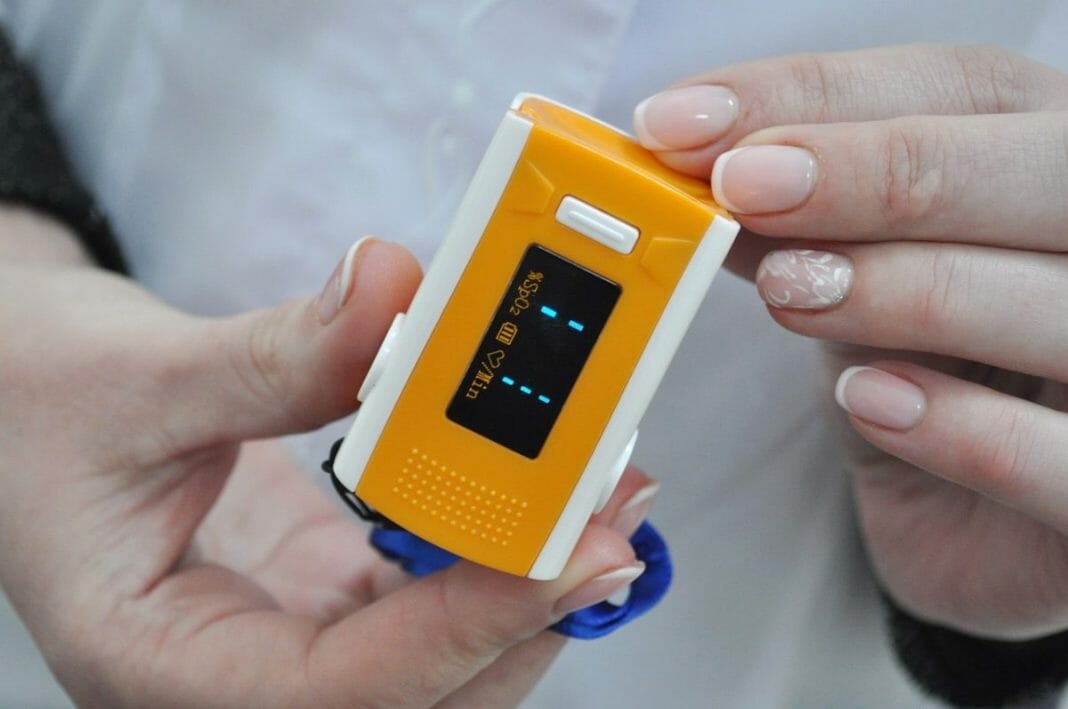Connected medical devices indicate the gadgets utilized for gathering data, applying the ingrained sensors in them, and channeling the piled-up data through the internet to the other synced devices.
The flexibility of channeling data via the Internet as well as sending and receiving information from other devices makes connected medical devices different from smart devices. At a CAGR of nearly 22 the global valuation of connected medical devices is forecasted to be $181.9 Billion in 2030.
1. Best IoT Architecture Backed By Experts for Connected Medical Devices
- Connected Medical Devices for collecting medical information of patients and transmitting it over the cloud server or for offering therapy.
- Gateways to filter, preliminary processing, and transfer of patient information to the cloud.
- Firewall makes sure the accumulated data is dispatched safely to the network.
- Streaming Data Processor to process as well as channel the data to the data lake.
- Data Lake accumulates patients’ medical data in normal format.
- Big Data Warehouse acts as a warehouse to stock the data imported from the synced devices for assessment.
- Data Analytics elucidates the piled data, marks out trends, and offers valuable details.
- Machine Learning Module for identifying sequences of symptoms among patient’s conditions and building Machine Learning models to boost the control application.
- Control Application sets off the activities in connected medical devices.
- Software Business Logic assists patients and healthcare professionals in obtaining the data stocked by the synced medical devices, observe specifications, and keeps latest arrangements.
- The Medical Staff Interface notifies the professionals regarding crucial deviations in the patient’s condition.
- Mobile Patient Health App offers the patients options to evaluate the accumulated data, and in addition it notifies them in case a suspicious change is observed in their health condition.
- Admin Interface provides complete access to the record of active users for the IoT-synced medical devices and directs the access to the system.
2. Connected Medical Devices: Best Use Cases
- Early Diagnosis
Early diagnosis is a universal use case for connected medical devices. Team of healthcare professionals can obtain patients’ medical information gathered over a while via wearable internet-synced medical devices. The aforementioned devices also note down deviations in the patient’s health condition over time that helps in early diagnosis for a disease.
- Customized Care
Remote observation is made possible with cloud-synced medical gadgets and IoT technology. Patients who have gone through surgery, have chronic diseases and require home care highly beneficiated from this use case of connected medical devices. Improvement of patient care and treatment is noticed via the Machine Learning produced care delivery models and wearable medical gadgets.
- POCD
POCD or Point-of-Care Diagnostics is another common use case for cloud-linked medical devices. Professionals can utilize the devices to perform a diagnostic process at any location like a patient’s house or not-so-advanced labs. The results of the diagnosis get auto-transmitted to the network for research.
- Hospital Disease Diagnostics
Medical appliances that cannot be moved transmit the reports of medical imaging to the servers for inspection. Conclusion of these pictures’ help the software perform a pre-diagnosis for correct and quicker medical decision-making.
3. Connected Medical Devices: Positives
- Optimized Diagnosis & Treatment. Patient data accumulated through the medical gadgets synced to the IoT server can be examined utilizing the predetermined parameters with the aim of improving the diagnosis and treatment processes.
- Collection, Storage & Assessment of Technical Data. The technical information gathered via the connected medical devices is assessed depending upon the neutral guidelines to ensure no harmful malfunctions are there.
- Warns on Unusual Parameters. Medical professionals and patients receive an auto-generated warning in case any of the crucial parameters is at an abnormal range.
- Remote Management. Utilizing the piled up medical information of the patient and the Machine Learning patterns in the data or devices’ performance the professional team can oversee the patient observing parameters, devices, alternate settings and also examine the execution of the devices from a remote location.
4. Connected Medical Devices: Common Challenges in Development
- Expenses. The connected medical device creator needs a significant amount of money to appoint a highly skilled development team to build an advanced IoT system for medical devices.
- Security. With the rising concerns of cybercrime cloud synced devices for medical purposes are bringing forth the threats for security and confidentiality of the collected data.
- Accuracy of the Collected Data. Maintaining accuracy can be a significant challenge in developing connected medical devices. Medical device engineers or developers need to be well aware of data gathering and transmission malfunctions. They also need to eliminate the potential risk of inaccurate data transmission and utilization for better medical decision-making.
- Compatibility. The connected medical device developers need to be mindful of the present connectivity protocols and build the medical device that is compatible with the relevant networks it requires to be connected.
5. The Bottom Line
Connected medical devices are becoming one of the best possible ways of giving accurate and effective treatment from remote locations. These medical devices help in optimizing diagnosis, and treatment, giving alerts on unusual changes in health data, and it also comes with the flexibility of remote management.
With extra attention to the challenges, a better healthcare service can be provided using connected medical devices.
